Ultimate Guide to Meal Prep
Introduction
Who this guide is for?
If you’re looking to lose some weight so you can keep up with your kids, have your spouse grab your butt more often or just feel confident in yourself again, you may have tried various diets in the past.
If you’ve had trouble sticking to your nutrition plans, then preparing your meals in advance will make your nutrition goals easier.
Even if you’re not trying to lose weight, meal prep can help save you time, money, and your sanity!
Who am I?
My name is Audrey Davidiuk. Back in 2014, I took a look at a picture of myself from a recent trip, and realized that I was in denial about how much weight I’d gained. I stepped on a scale and found that I was nearly 20 pounds overweight. Through trial and error, I was able to lose that weight, and even a bit more!
Much of my success came from meal planning and prepping. It was so much easier to stick to my eating goals when I knew my food was already ready and waiting for me. It was easier to go to the gym regularly when I knew that I wouldn’t have to go home and then cook after; dinner was waiting, and I could eat right after my workout.
Why did I create this guide?
Studies have shown that we all have a limited amount of willpower each day, and each decision we make lowers that self-control. And it’s been discovered that we make over 200 choices on food alone each day! That’s a huge drain on our already-taxed willpower. Many people who want to eat healthier beat themselves up for not sticking to their meal plans.
The key isn’t about being more disciplined, it’s about having systems in place that make the right choice (eating healthier) the easiest choice. That’s where meal planning and prepping comes in.
I know this is an area many people struggle with, so I wanted to share what I’ve learned (sometimes the hard way) so that others can achieve similar results in less time.
What you will learn?
I cover a lot in this guide. You will learn:
- Different types of meal prep techniques
- How to keep from spending all your time cooking.
- How to vary your meals so you’re not eating the same thing all the time, but also the benefits of keeping things as simple as possible.
- How taking some time to do the mental planning work up front, will make the physical work of actually cooking or putting your meals together that much easier.
What will you get from this guide?
By the end of this guide, you will have a fully fleshed out plan for how to best implement meal prepping in your own household. Give the various techniques a try, and see which ones work best for you.
| Note:
Throughout this guide I make mention of number of “meals”. As an estimate, one meal serves one adult. So four meals could serve a family of four once, or a family of two twice. |
Table of Contents
- Introduction
- How a little planning saves you a lot of money
- How planning ahead saves you time
- 10 Tips to keep you from spending your entire weekend in the kitchen
- How to make sure you never get bored of eating the same meals over and over
- These strategies will help keep your food tasting as fresh on Friday as on Monday
- Meal prep for different nutritional needs – When you’re the only one in the house on a diet
- How to handle it when coworkers are going out for Taco Tuesday, and you’re stuck with chicken and broccoli. Again.
- Where is that damn Tupperware Lid? (Or: Storage Considerations)
- Optimize your shopping list to save time and money
- Don’t throw your time and money into the trash! (How not to waste food)
- How to keep yourself from ending up at the drive-thru window when you’ve had a really rough day
Okay, I get that it seems like a lot. If you don’t have the time to read this all in one sitting, just use the links above to jump to where you left off, or the section that can help you the most.
Because this guide is so PACKED with info, I made an e-book version of this guide you can download for your e-reader. Just fill out the form and I’ll send you the PDF along with a FREE bonus recipe booklet containing my favorite quick and easy meals!
How a little planning saves you a lot of money
Not wasting food
Growing up, my father was extremely frugal. He really hated any sort of waste, but especially throwing away food. Not only would he complain about the waste of money, but there would always be the lecture about starving children in Africa that could have eaten that food. To this day, I still get extremely frustrated with myself when I have to throw something away because it got moldy or went bad.
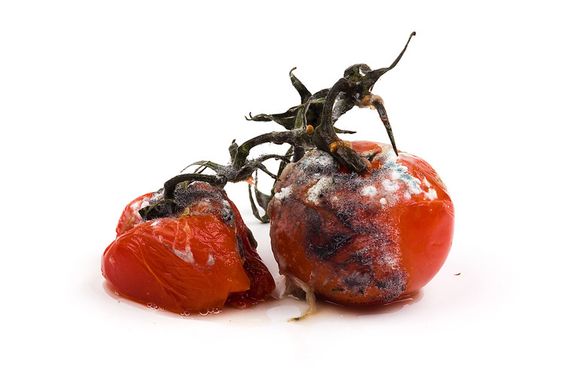
When I plan my meals out in advance, I only buy what I need for the week, so there is a lot less waste. Because I keep my meal choices limited for simplicity’s sake, even if I don’t use that entire jar of pizza sauce this week, it is likely I will use it all up before the expiration date.
Since food isn’t getting wasted, I’m not spending extra money to buy the same food twice because the original food I bought has gone bad.
Not eating out as often
The point of this guide is not to stop you from eating out at restaurants ever again. But dining (or even lunching!) out can get expensive. Especially if your family is more than just two people. If you have teenagers, then you know what I mean. Going out for dinner on special occasions is great! But those not-so-special trips to the drive thru because of a hectic day can really add up.
Buying in bulk
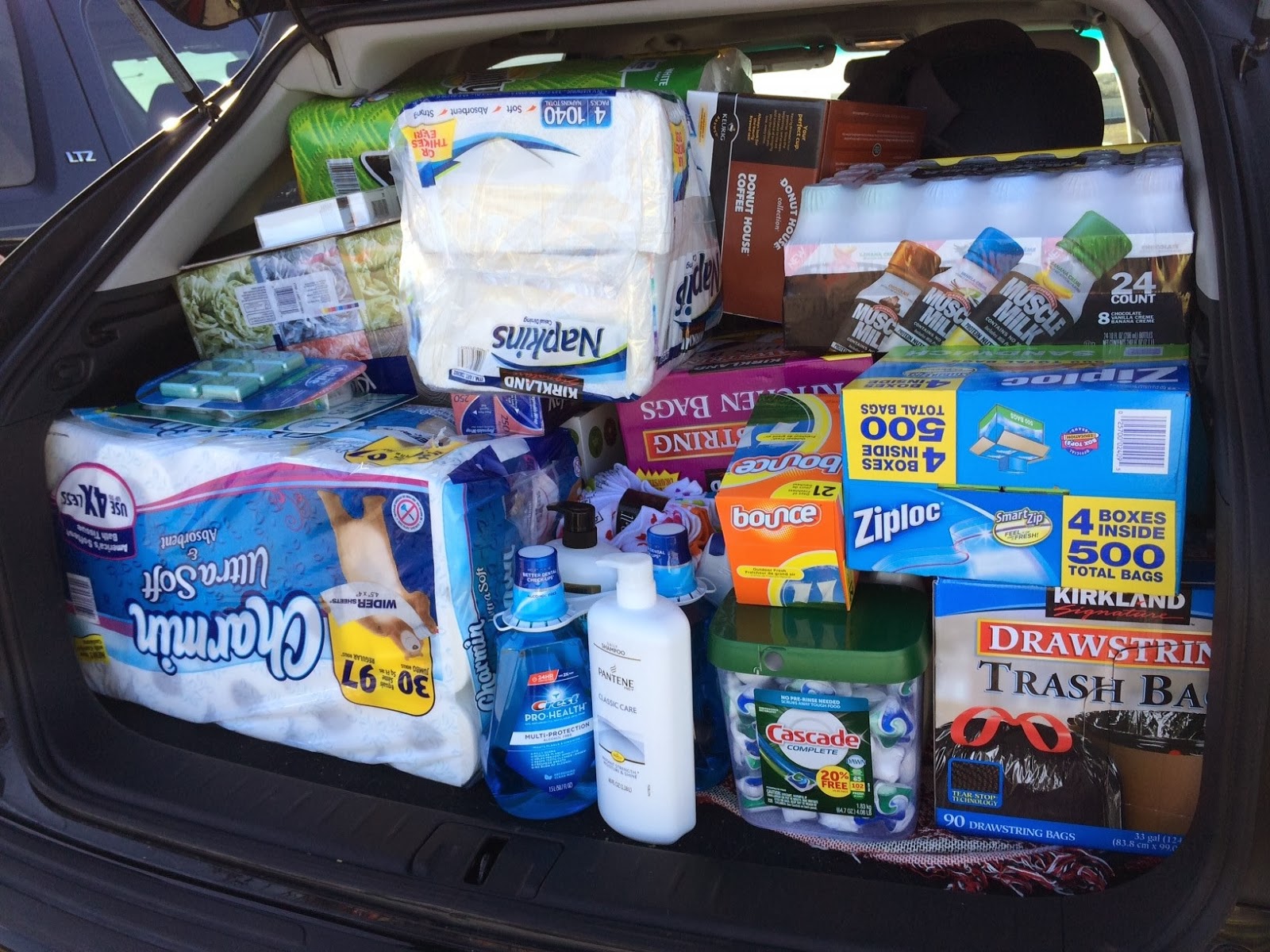
If you have the ability to do so, and the space to store it all, buying in bulk can net you significant cost savings. The unit price is generally much less, and you can take advantage of any specials your supermarket is having.
This requires a much higher level of planning ahead, however. While freezers allow food to be stored for a long time, the food won’t last forever, especially if care is not taken to package it up properly before freezing. You’ll have to plan out further ahead to make sure those savings don’t end up going to waste.
Instantly cut your food bill in half
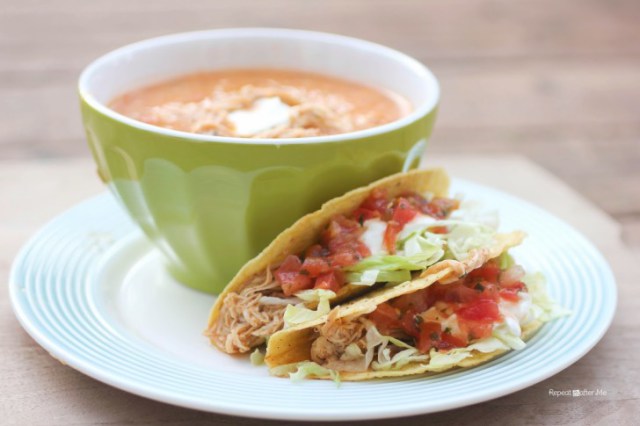
One of the meals we make often in our house is ranch chicken tacos. It takes literally 5 minutes to prepare the chicken, and it can cook in a slow cooker all day, so it’s ready to eat once you get home from work. We usually get at least 4-5 meals out of it. Here’s the breakdown of what it would cost to buy the ingredients:
- 4lbs of Boneless, Skinless Chicken Breast – $7.96
- Chicken Broth – $1.19
- Taco Seasoning Packet – $0.79
- Ranch Seasoning Packet – $1.99
- Taco Shells (optional) – $2.23
- 1 bag Chopped Romaine Lettuce – $1.50
- Shredded Taco Cheese – $2.49
- Sour Cream – $1.50
Total: $19.65
Compare that to 4 value meals at McDonald’s, regular-sized:
- 2 Double Quarter Pounder with Cheese Value Meals (what my husband usually orders): $16.78
- 2 Artisan Chicken Sandwich Value Meals (what I usually order): $16.58
Total: $33.36
That’s almost DOUBLE the cost! Eating at home is significantly less expensive, WAY more healthy, and even takes less time that you would spend in line at the drive-thru!
How planning ahead saves you time
The secret is the setup
Imagine meal prepping as a project you have to do, like doing some gardening, painting a room, or doing work on your car.
Sure, you can jump right into the thick of things, but often, that leads to wasted time. You realize that you don’t have that trowel you need, so now you have to hike back to the garage to get it.
Halfway through painting your bedroom, you realize that you didn’t buy enough paint, so now you have to go back to the store to buy more.
You take a wheel off of your car to fix the breaks and realize you need metric wrenches instead of standard ones. Now, not only do you have to go to the store, but you have to put that wheel back on in order to do so in the first place.
A few minutes spent planning ahead of time, and all that wasted time could have been saved. It’s the same with meal prep. Spend some time thinking about the foods you would like to make and create a plan for what you need to save a lot more time on the back end. I call this my “One and Done” technique. Instead of doing something multiple times, just batch it all and do it once.
Do things once
One way that prepping can save you time is by only having to do certain things once. By portioning out my lunch salads into individual containers ahead of time, I save time not doing certain things multiple times.
I don’t have to open the fridge, take out the spinach, lettuce, carrots, tomatoes, and feta five times (once each work day). I don’t have to get out a knife to slice the tomatoes and a spoon to dole out the feta five times. I don’t have to wash the kitchenware I used to make the salad five times. I don’t have to put all that stuff back into the fridge or trash five times.
Instead, I take it all out once, portion everything out, use one knife and one spoon, put the finished salads in the fridge and throw away any packaging. One and Done.




Grouping similar meals
While you don’t want your menu to get boring, by grouping meals with similar ingredients together, you can also save a lot of time. If two or three different dishes call for chopped onions, you can simply chop it all up at once. One and Done.
Especially if you plan on making freezer meals (more on this in a bit), this can be a huge time saver. Slicing and dicing a lot of one ingredient is faster than having to switch up what you’re working on constantly. You can even use a food processor to get a huge quantity done quickly, depending on what your recipes call for.
So when planning out what to eat, think about whether you can choose meals that use similar ingredients to save you time during the prep.
Deciding what to eat

Deciding what to eat can be a challenge. “What are you in the mood for” is a common question. You would think that trying to pick out multiple meals would be even harder, but surprisingly, it isn’t.
Just go through your meal library (I’ll show you how to do this a bit later), pick out what sounds good for the week. Then, during the week, you have a far more limited number of options to choose from.
Based on your schedule, you may have even already decided what to eat, and when you’re going to eat it. For example, on days I have my horseback riding lesson, I don’t get home until 6:30-7:00pm. So we always plan to eat leftovers that day, since it just requires heating it up in the microwave, and my husband doesn’t have to wait for me to get home to have his dinner. Which means that the original meal for those leftovers needs to be cooked on Sunday or Monday (if we don’t want to be eating the same thing two days in a row).
Unless I’m craving something very specific, usually it takes us a good 15-20 minutes to decide what to eat if we are going out. Does this conversation sound familiar?:
| “Where do you want to eat?”
“I dunno… Are you in the mood for anything in particular?” “How about sushi?” “Nah, it’s cold out, and sushi is cold. I want something warm.” *Get distracted by our phones* 5 minutes later: “So, where do you want to eat?” “I asked you first!” |
Imagine doing that every single day. Whereas with planning out our meals for the week, we are both looking at our meal library and the conversation is more like:
| “Are we on chicken thighs or chicken wings this week?” (We alternate, but have this as a staple every week)
“Okay, we need a recipe that gives us leftovers, how about… balsamic roast beef?” “Sounds good” “We haven’t done stir-fry in a while, how about that?” “Okay, and we still have some tilapia in the freezer, we can do that one day.” “I’m traveling this week, so I won’t be here for dinner on Thursday, so we’ll need to get you a frozen dinner for that day.” “Alright, I think that’s it, right?” *Count up the number of meals* “Yep, we’re good.” |
One (meal planning session) and Done.
When you’re purposefully going out to eat, you want to make it special, so it can be tough to make a decision because you want to get it “right”. Planning your meals takes a lot less time because there is a lot less pressure. And having that meal library handy makes it even easier to see all your options at a glance.
10 Tips to keep you from spending your entire weekend in the kitchen
5 Different Types of Prep
Freezer Meals
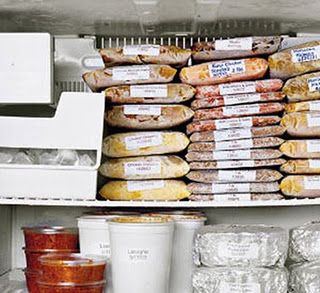
Often when thinking of meal prep, freezer meals is what comes to mind. You do all the preparing of a dish, then dump it into a freezer bag and store it. Later, you dump the contents of said bag into a slow cooker or casserole in the oven for cooking.
You spend your time and effort up front doing all the chopping and mixing, so that when it’s time to cook, you just dump it in a container, set a timer and wait. This type of cooking lends itself very well to making very large batches of food, as well as batching the preparation of your meals.
Some people are wary of planning out freezer meals because they worry that their entire weekend is going to be spent in the kitchen and on nothing else. That’s a huge hurdle to overcome.
One way to get around this is instead of making all the meals on one day, make one recipe each day for a week, but quadruple that recipe. This may seem to go against the “One and Done” technique, but it’s more like “One (week) and Done (for the month)”. At the end of the week, you’ll have made enough meals for an entire month, and by varying your recipes, you won’t get bored of what you’ve prepared later.
One thing to keep in mind when making freezer meals is to check if the recipes you choose can be made right from frozen, or if they would require thawing first. If food needs to thaw first, and you forget to do so, you’ll have to order take-out, and your efforts will be wasted. But if you can remember, then freezer meals are a great way to prepare a lot of food in a relatively short amount of time.
Just refrigerated
Depending on how far in advance you’d like to stage your cooking, you can also get away with just refrigerating some of your meals after preparing them.
In our house, we actually only do meal prep for dinners one day or so in advance. So often times we prepare our meals the night before, and then just cook them up the next day. This lends itself especially well to marinated dishes. After eating dinner for that day and relaxing for a bit, we can prepare the marinade for the next night’s dinner, put the ingredients all together in a bowl, and set it in the fridge overnight to absorb all those flavors.
Another example of when refrigerated meals might come into play is when we prep our lunches for the week. We cook it all up at once, put them in their individual containers, and then keep it in the refrigerator to grab and go.
Leftovers
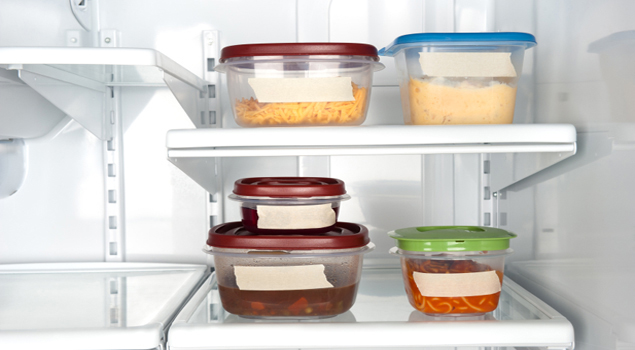
Some people think leftovers is a dirty word. But there are some foods out there, especially soups and stews that taste so much better the second time around.
You can plan ahead for leftovers to cut down on the number of different meals you need to make each week. You can either double up a recipe and plan to have that dish twice in a week, or create extra with the intent of having some for lunch the following day, rather than having the same thing for lunch all the time.
A third option is instead of having the planned leftovers that same week, freeze it for a week or two later. One less meal to prepare and cook! Just try to plan your leftovers strategically so any remaining food doesn’t go to waste.
Meals that aren’t dinner
Meal prep can be an effective tool for times other than dinner as well. If you find yourself in a rush to get out the door every morning, having egg muffins that you made ahead of time ready and waiting can be the difference between having a healthy breakfast, or caving in to donuts when you get to work.
If you’re a fan of smoothies in the morning, you can pre-portion out the ingredients and put them into individual baggies and then freeze or refrigerate them. Then just dump a bag of fruits and veggies into your blender, add some milk and you are on your way.
For a fantastic smoothie recipe, I recommend watching the video below by Mike Vacanti. He makes his smoothies fresh each morning, but if you freeze the fruits ahead of time, you don’t even need to add extra ice. It’s a quick and easy breakfast, chock full of healthy micronutrients to get your day started on the right foot.
Making lunches for the week ahead of time can prevent the urge to hit up the drive through during your lunch break. At one of my previous jobs, there was only one fast food place nearby, so it was always slammed during the lunch rush. Having my lunches already made and with me not only saved me money, but also a lot of time.
The Grab-n-Go Technique
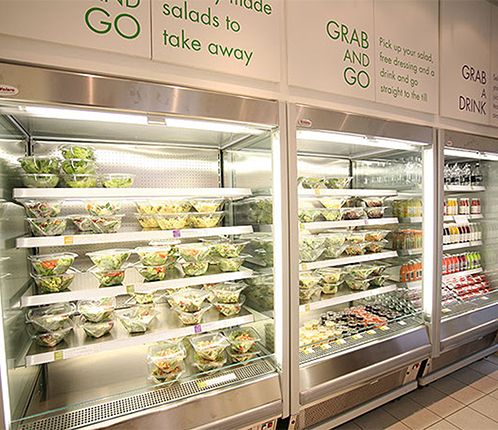
Another way to incorporate meal prep into your eating habits is to pre-portion out meals and snacks. You want to make it as easy as possible for you and those in your household to make the healthier choice when it comes to eating. In this vein, having foods already portioned out, so that all someone has to do is grab a container and go, is a great way to make it easier on everyone.
I use this technique whenever I buy grapes. When I get home from the store, I wash them, and then pick each one off the stem and put them all into a bowl. That bowl then goes right into the fridge. Whenever I’m prowling for a snack, it’s so easy to just reach in, grab a handful of grapes and satiate my sweet tooth.

This can also prevent overeating of certain foods. How often have you opened up a bag of something and started snacking, and next thing you knew, it was all gone? The Grab-N-Go technique can help since you will have already doled out the food into individual serving sizes, so you will always know exactly how much you are eating.
If you are having trouble with straying from your nutrition plan because of binge eating, I highly recommend you check out Reshanda Yates’ Binge Eating Guide. In it, she shares her story of success in overcoming binge eating and how she learned to eat mindfully.
An alternative to the Grab-n-Go Technique is to buy your foods already pre-portioned, or even pre-prepped.
My grocery store sells bags of single-serving steam-in-bag veggies. Those are perfect to put in a lunch box and heat up later. When we make butternut squash soup, we buy the pre-peeled and pre-cut pieces of butternut, rather than buying a whole one and having to peel, seed, and cut it up ourselves. When we make salads for our lunches for the week, we buy bagged salad which is already pre-chopped and pre-washed.
Buying pre-prepped ingredients generally costs a little more, but can save you a ton of time. You’ll have to find the balance that works best for you between saving money and saving time.
5 Tools and tricks that will make meal prep 10x easier (and save you hours on clean up)
The tricky part about cooking, dinners especially, is that when you want to eat, you want to eat NOW. Not an hour from now. Sure, I might have nothing to do on a particular evening and can spend hours on a dish if I wanted. But then I would be having my dinner at 9pm, instead of 3 hours earlier. Below are five of the tools I use in the kitchen so that I can spend a lot less time in there!
Make your slow cooker your best friend
(Time:***** Effort:*)
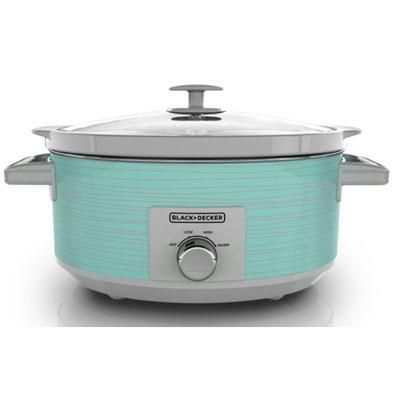
Finding a few recipe staples that can be made in your slow cooker is the surest way to stick to your meal plan. After a long day, the last thing you want to do is slave over a hot stove.
Many slow cooker recipes are just dump and go. At most, you might need to take 5 minutes in the morning to mix together some ingredients for a sauce to dump in there. At the end of the day, dinner is done, and it’s just serve and enjoy!
If your goal is weight loss, just be prudent about which recipes you choose; many slow cooker recipes are “comfort foods” which is a sneaky way of saying “high in fat and calories”. That said, there are LOADS of recipes out there that give you healthier options for your favorite dishes.
For quick and easy clean up, I highly recommend using liners in your slow cooker if you are going to be making a dish such as chili where the food gets a bit “baked on” and harder to scrub off.
Grill it up for extra flavor without the frying
(Time:** Effort:***)
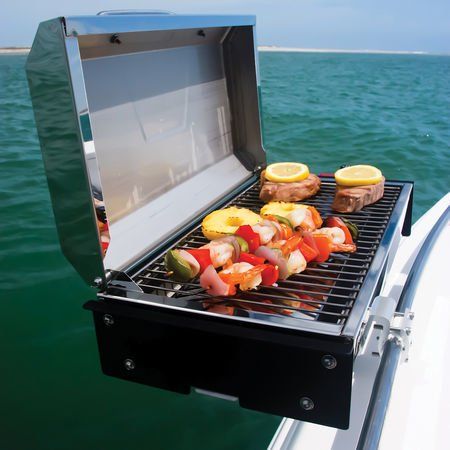
During warmer months, using your grill can be a great way to make some quick meals. These dishes take a little bit more “babysitting” to cook, but they can cook up nice and quickly.
The flame also gives your food that extra flavor that you just don’t get from simply steaming or poaching your foods. As a bonus, that extra flavor comes without all the added grease that is absorbed when you fry or sautee your meals. Grilling up your veggies especially makes them more palatable.
And you don’t have to stop grilling once it gets cold. While some people brave the elements and grill outdoors year-round, once the weather gets chillier, we bring our grilling indoors by using our Foreman grill.
Once your food is done, (I personally prefer my steaks medium-rare) let the grill run for a bit on high to burn off any food still stuck to the grates. Then run a grill brush over it to easily clean it up for next time.
For a Foreman-style grill, just scrape it down while it still hot to get all the gunk off, and then wipe it down with a damp paper towel and it’s ready to go. Just be sure to use warm water; cold water on a hot grill can lead to cracked plates!
One-Pan oven meals
(Time:**** Effort:**)
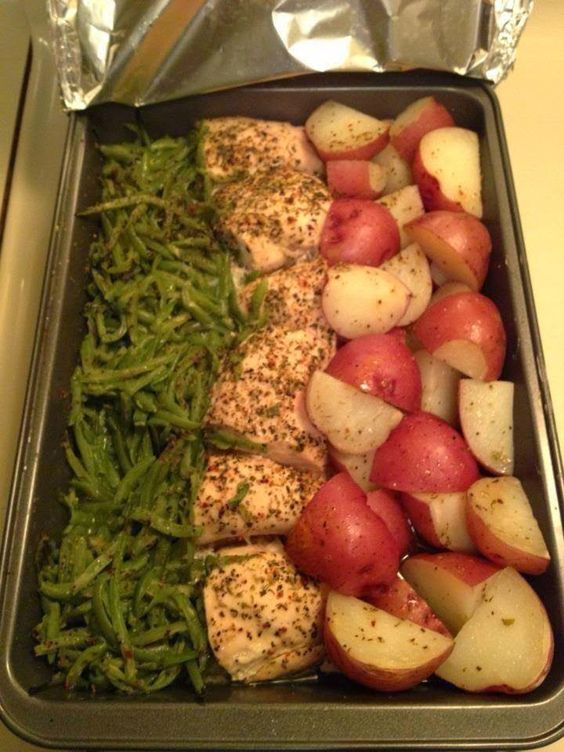
Baking food can take a while, but like the slow cooker, you just put the food in, set a timer, and go about your life until the timer beeps. These types of meals work great on days when you can start dinner early, but you have lots of other things that need doing around the house and can’t afford to spend all your time stirring and flipping.
The chicken thighs/wings that I’ve mentioned are an oven meal that we make weekly. Just sprinkle the meat with some season-all salt, and pop the tray in the oven for 55 minutes at 400F.
Line your baking dish or tray with foil to help make clean-up a breeze when using the oven to cook your meals. And there’s a nifty trick to getting the foil to sit nicely without accidentally poking holes in it when lining a dish:
|
See this video for how it’s done:
Marinades maketh the meal
(Time:** Effort:**)
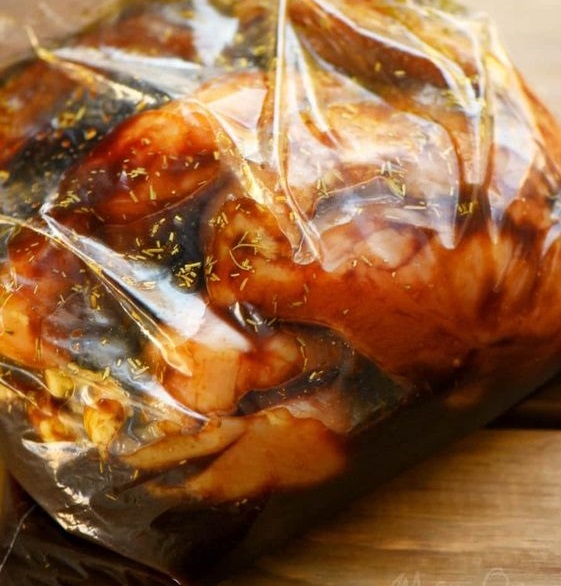
Most days, we head to the gym straight after work, so by the time we get home, we’re starving. If we’re going to cook, we want a meal that will be done quickly, so that we can spend the rest of our evening relaxing.
This is where marinades are a great fit. It’s no big deal to mix up a marinade the night before, after eating, when I have plenty of time.
This is also another opportunity where doubling or even quadrupling a recipe makes sense. Make a big batch of your marinade, and store the extra. Next time you want to use it, it’s already prepared.
Pour some of that flavorful goodness over whatever you’re going to cook, and pop it into the fridge to infuse over night. The next day, all you have to do is quickly cook it up. We use this method for stir fry and a couple of our grilled favorites.
The microwave: not just for heating leftovers
(Time:* Effort:*)

One cooking method to not overlook in the quest for cooking up healthy FAST meals is microwaving. It can be used for so much more than reheating leftovers or popping some popcorn.
Cooking a spaghetti squash in the oven can take up to 45 minutes. But I can get it done in the microwave in 12.
|
Similarly, when we do corn on the cob, we leave the corn completely in the husk, and just chuck them right into the microwave for 4 minutes per ear. Comes out perfect every time, and there’s nothing that needs to be cleaned up once the husks are peeled and tossed.
|
Rice is one starch that gets eaten somewhat regularly in our house, but not often enough that it makes sense to own a rice cooker to make big batches from scratch. So we buy the microwaveable bags of “ready rice”. Just tear the corner to vent, pop the bag in the microwave, and 90 seconds later, perfect rice. This works especially well for two people, because we can just divide the bag between us and there are no leftovers.
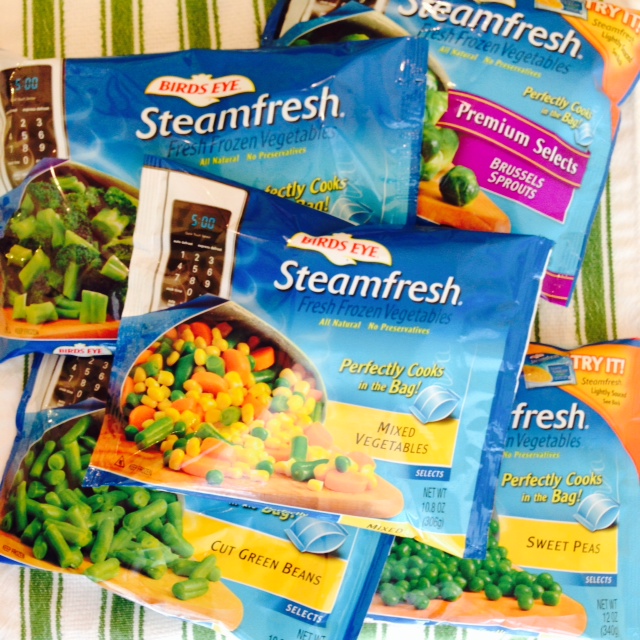
Steam-in-the-bag vegetables are another way to get some extra use out of your microwave. Frozen vegetables are often flash-frozen at the peak of ripeness, so they are just as nutritious as fresh ones. The steam-in-bag frozen vegetables are designed to cook up perfectly in your microwave. You can even find single serving packets so you can take some with you for lunch. My favorites are broccoli, corn and edamame.
How to make sure you never get bored of eating the same meals over and over
Meal Library
Let’s get down to some of the nitty gritty tactics you can use to help you get your meals prepped.
One I’ve mentioned a few times already in this guide is having a meal library. This is simply a list of meals that you can make. I recommend whittling this list down to meals that take very little time or prep, however.
For example, the chicken thighs/wings we make each week only take five minutes of prep. We have a lot of slow cooker meals that take very little prep; just dump stuff in and turn it on. Both of these take a long time to cook, but they don’t require attention while cooking, so I can get other things done while waiting.
Many of our grilled recipes take very little time to cook: just a few minutes on each side. As you come up with your list, keep in mind the goal is to cook and eat these meals at home. If it takes too long to cook or prepare, you might decide to just go out.
Our meal library is simply a note in a shared Evernote notebook. It is organized with some categories: Chicken, Beef, Pork, Seafood, Soups and Other. And then below each category, we list out the meals that fit.
The majority of meals that we find for the list come from Pinterest. On occasion, we’ll try something new, and if it’s a keeper, it gets added to the library.
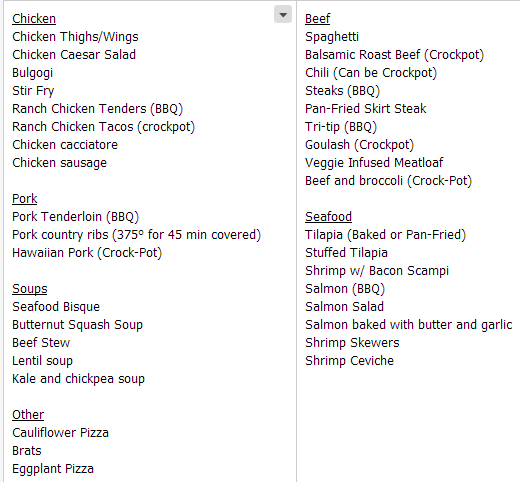
Now, if you want to get super fancy with organizing your meal library, you absolutely can. Shelby, over at Little Coffee Fox came up with an ingenious way to keep her meal library in her bullet journal.
She uses post-it notes to write down her recipes, as well as the ingredients needed, so when it was time to make her grocery list, all the info she needed was right there. In the vein of not making the same foods over and over again, she also has a section of new meals to try.
And since they are all on post-its, if a new meal is a keeper, it is simple to just move it over to the “old favorites” section. When it’s time to start a new journal, simply peel off the post-its and move them over to the new one.
The post-it method also can be used to force a meal rotation. As you make a meal, move it from one page to another, and you have to use up all your recipes before you can cycle through them again.
Chicken and Rice, Five Ways
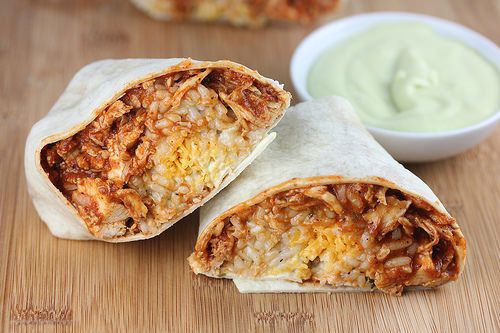

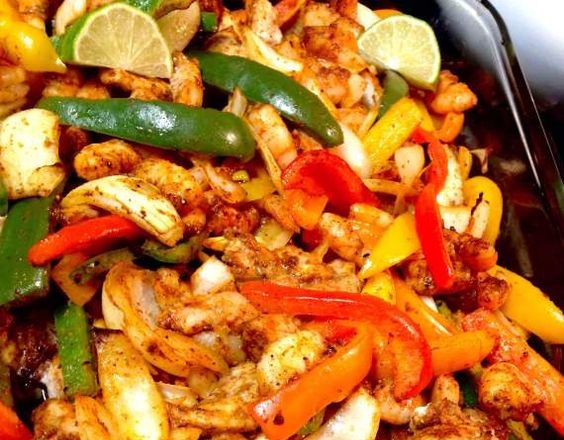

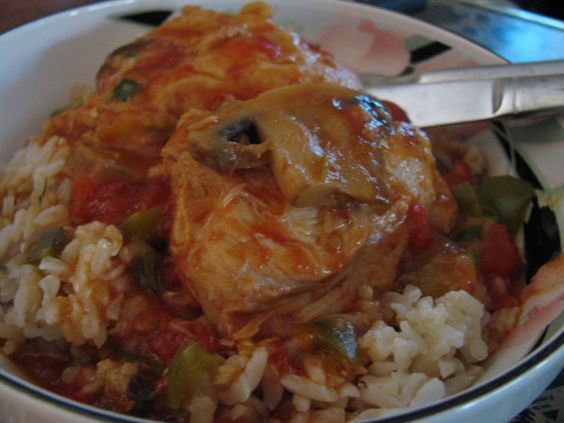
One hang up many people have about meal prep is this thought that they are going to end up eating the same thing over and over and over. It is entirely possible to batch cook for the week but still have variety!
Let’s say you cook up a big batch of diced chicken breast and a whole pot of rice. Chicken and rice gets boring, so let’s jazz this up a bit.
- Burritos: Put the chicken and rice in a tortilla with your favorite burrito fixings (hopefully this includes lots of veggies!) and add a bit of cheese, sour cream or guacamole for Chipotle at home
- Chili: Reheat the chicken with some canned white beans and some seasoning for chili you can serve over the rice
- Fajitas: sautee up some peppers and onions and use up the rest of those tortillas (cook the veggies under the oven broiler for that flame-grilled taste)
- Soup: Add a bag of mixed veggies and some broth (for soupier) or cream of chicken (for thicker) to make a chicken and rice soup
- Quick Cacciatore: Reheat the chicken with some seasoned canned tomatoes. Add in some peppers and mushrooms if you like. Mix in the rice, and top with some shredded mozzarella for a quick Italian dish.
A week’s worth of chicken and rice, and none of it boring.
The Pasta Wednesday Approach – keep it interesting, while also saving time deciding what to eat
The ultimate goal for this ultimate guide is to make it easier for you to cook and eat healthier meals at home. One way to streamline the “what are we going to eat” decision making process is to make the same food all the time. But since that gets boring, here’s how you can leverage the time savings of eating the same food, while keeping things interesting.
Alternate between meals each week
In our house, we have baked chicken nearly every week. But we alternate between doing whole chicken wings and chicken thighs. It’s a small thing, but it’s different enough in the way you eat wings versus thighs that it keeps it from getting too boring.
Additionally, during grilling season, we have two favorites (rosemary ranch chicken and bbq pork loin) that we alternate week to week. That’s two days each week where we already know what we’re going to eat.
Pick a food, then find ways to change it up
Maybe you have pizza every Friday night at your house. Instead of getting pepperoni each time, can you try different flavors? Maybe a white garlic pizza. Perhaps bbq chicken pizza.
Maybe Wednesday is always pasta day. It doesn’t always have to be spaghetti with meatballs. You can do a bolognese, or a garlic sauce (I love garlic), or even a cream sauce.
Taco Tuesday? Try ranch chicken tacos or even fish tacos as an alternative to the standard ground beef.
You can also have a chicken and rice day and alternate some of the methods I mentioned above to prepare it.
The Case for Keeping it Boring
While variety is the spice of life, deep down, our bodies love routine. That’s why it’s recommended you go to sleep and wake up at the same time each day.It’s how you form habits you don’t even have to think about anymore, you just do them.
Back in the intro to this guide I linked to studies showing that we only have a limited amount of willpower each day. And that each decision we make drains that willpower. (If you’re into certain types of video games, you’re draining your mana.) And on top of that, we make up to 200 food decisions each day! That’s a huge drain on your already taxed resources.
But what if you didn’t have to make those choices? What if there wasn’t a choice? This is why the late Steve Jobs always wore black turtlenecks. Instead of wrestling with what to wear every day, he eliminated that choice, and just always wore the same thing.

Those super fit people you see on Instagram and Pinterest? They eat the same meals over and over because their goals are more important to them than their tastebuds.
While some of you may be rebelling at this thought, I urge you to try it out, or at least think it out.
How often do we eat the exact. same. thing. for breakfast every morning? And yet, we don’t get “bored” of it. When you go out to a certain restaurant, do you tend to order the exact same meal? I know that when I go certain places, I claim one of these days I’ll try something new, but I always end up ordering the exact same thing, because it’s my favorite.
When you were a kid, were your lunches always different, or always the same? When I was getting lunch at the school cafeteria, I got a hamburger and fries every day with only two exceptions: turkey and gravy day and salisbury steak day. During the few months where I would pack my lunch, it was always bologna with mayo on white bread. Every day. And I never felt “bored” with what I was eating.
Cooking the same meals over and over means you get really good at cooking those meals, saving you the time of having to look up the recipe and keep referring back to it. You also figure out a rhythm for making it that speeds up the process.
Being boring with your meal choices additionally lets you take more advantage of buying in bulk, thus saving you more money.
So give it a shot. Come up with a meal to have for breakfast or lunch all week, make a big batch of it, portion it out into containers, (don’t forget it in the fridge!) and see if it drives you crazy, or if it’s liberating, having those decisions already made for you. You can always add more variety to your meal rotation if you need it on days you have more time, such as on the weekends.
These strategies will help keep your food tasting as fresh on Friday as on Monday
You’ve prepped all your meals, and you’re excited about what you’re having for lunch this week. You’ve even perhaps gotten used to eating the same thing every day.
Friday rolls around, and you go to have your salad, and… ugh. The lettuce is limp, or worse, starting to turn to liquid. The tomatoes are mushy. The cheese looks like it might be starting to grow something. So you throw it away and hit up the drive thru, annoyed at the waste.
Here’s how you can keep all your hard work from turning sour.
Start Fresh
One way to keep this from happening, especially with produce, is to make sure you start with the freshest ingredients possible. Check to be sure that your fruits and veggies are as crisp as they can be.
When buying bagged salad, make sure there aren’t any pieces that are squished and runny looking. The saying about “a few bad apples spoil the whole bunch” holds true for any sort of produce.
If one item or piece of something is bad, it’ll spread, so be sure you are starting with the freshest foods possible.
Avoid excess water
Another tip for keeping produce fresher longer is to make sure it isn’t stored wet. If you wash your fruits and veggies when you get home, be sure to dry them thoroughly before putting them into any containers for storage.

If you are making cooked foods, let them cool, uncovered, before putting the food away in the fridge. This lets the steam escape, rather than trapping it in with your food where it will condense into excess moisture.
Have two prep days
Despite #MealPrepSunday trending once a week on Instagram, many people do their meal prep twice, for the express purpose of keeping foods fresher towards the end of the week.
If the food you’ve planned out is quick and easy to make, you can spend some time on a slower evening prepping your meals for the last half of the week, so that it’s only been sitting for a couple days, rather than five.
Meal prep for different nutritional needs – When you’re the only one in the house on a diet
A lot of how you deal with the hurdle of different nutritional needs for different family members depends on what diet plan you are currently following. The following advice assumes you are trying to lose weight, but if you’re trying to bulk up, do the opposite!
Make the same food, eat less of it
One option is to simply eat the same foods as everyone else, but be more diligent about eating a single-serving portion. Weigh it out if necessary. After a while, you’ll develop a good eye for what one cup or eight ounces of certain foods looks like without needing the kitchen scale.
Swap starches for veggies
I have nothing against carbs, but cutting back on them is a really easy way to cut back on calories, and lose some water weight. My husband recently decided to try doing a keto diet for a bit. In keto, the number of carbs you can have is severely limited.
I made my Kalua Pork the other night, and while normally we have it with rice, I had rice, he didn’t. He simply doubled up on the amount of broccoli he had.
Is it taco night for the family? Let them have their taco shells, make yours a taco salad, and use lots of extra lettuce.
Pasta day? Try swapping in spaghetti squash or zucchini noodles for the fettucini.
Drink plenty of water
Most of us don’t stay hydrated enough. And often times thirst can be mistaken for hunger. Avoiding liquid calories is a really easy way to keep in line with any diet plan. Let the rest of the household have their soda or wine, and stick with water unless it’s a special occasion.
How to handle it when coworkers are going out for Taco Tuesday, and you’re stuck with chicken and broccoli. Again.
Food companies spend lots of money on research to find out what to put in their food to make people keep coming back for more. The colors, the flavors, even down to how much crunch is just right for that taco shell, all of it is meticulously measured and designed to get people to eat more.
When someone says that a certain food is “like crack” to them, they’re not far off. It’s been engineered to be as pleasant as possible for your tastebuds.
Since most of us cook our food in a kitchen and not in a lab, it can be hard to compete with what chain restaurants are offering. Here are some tips to help you stick to your healthy meal plan when others are going out.
Ask them to stop asking
If you would just rather not be tempted at all, you can ask your coworkers to just stop inviting you. Here’s a script you can use:
| “I appreciate that you guys think to invite me, but I really need to stick to this meal plan* and it would really help me out if you just snuck out of the office without tempting me!” |
(*if you think it would help, you can add in a reason here, such as “because I’m training for a 5k, because I’ve got a vacation/wedding/other event coming up, or because my doctor says so”)
Plan ahead to join them
If your coworkers go out regularly, you can also choose to make a plan to join them. How often you choose to do so will depend on your goals.
Office politics can be tricky to navigate, and your career might depend on making strong bonds with your fellow employees. So plan ahead once or maybe twice a month to grab lunch with the crew.
Do this by checking out the restaurant menu online, and decide ahead of time what you’re going to order.
If you do join them, order first
We are the average of the five people we spend the most time with. If you join your friends for lunch, and everyone else orders a bottomless margarita, chances are when it’s your turn, you will order one too. By ordering your food first, you won’t be as tempted by what others have decided to get, and you might help set a healthier example for your team!
Where is that damn Tupperware Lid? (Or: Storage Considerations)
Taming the Tupperware Nightmare
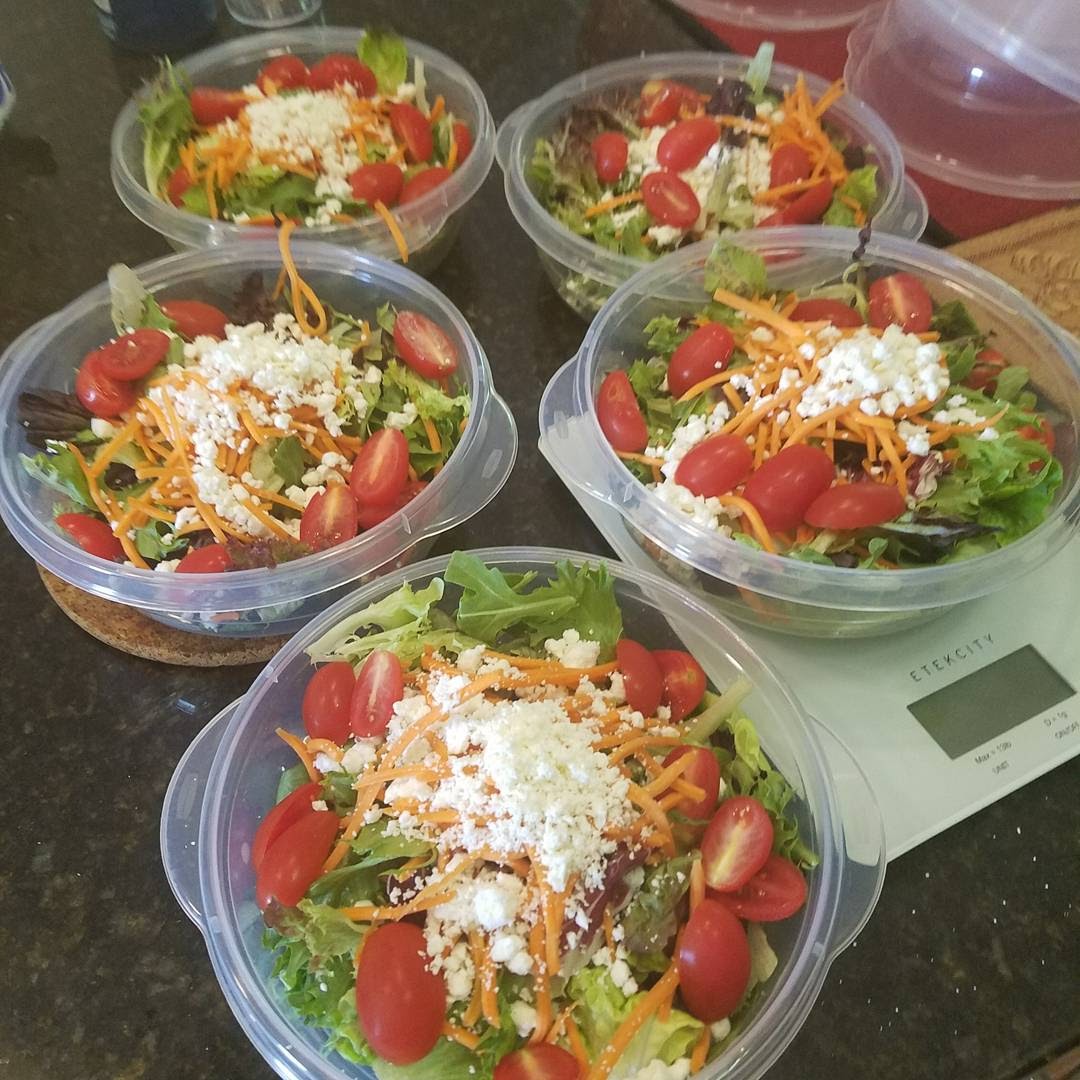
Ever see those amazing images on Instagram where someone has prepped out their meals for the week, and it’s all beautifully laid out and neat and organized? A couple of things are going on here to make that photo so visually pleasing, and I’m not just talking using that Valencia filter.
The food is all the same (or nearly so)
If you look at these images, the food in each container is almost the same. There’s some (often grilled) protein, there’s vegetables, and then there may be some starch (often sweet potato or quinoa).
Now, some might be chicken and others salmon. And the veggies might switch from broccoli to brussel sprouts, but the composition of all the meals is the same. It might be a bit boring on the tastebuds, but it is a lovely sight to our eyes.
The containers are all the same
In these carefully arranged #MealPrepSunday shots, you’ll also notice that all the containers are the same. That lets them line up nicely and creates a pleasing aesthetic.
You may not care what any of this looks like for a photo, but having a set of containers you use solely for the purpose of meal prep will make your life easier.
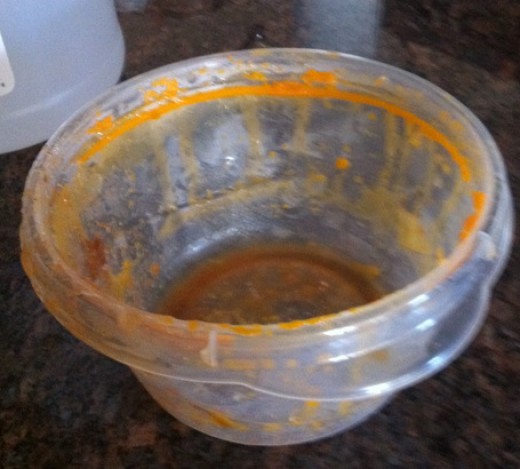
We’ve all been there: trying to find a plastic container that’s the right size with a matching lid. One that isn’t completely warped or discolored from heating up a tomato-based dish in the microwave.
Now imagine trying to find a week’s worth of such containers. My blood pressure goes up just thinking about it!
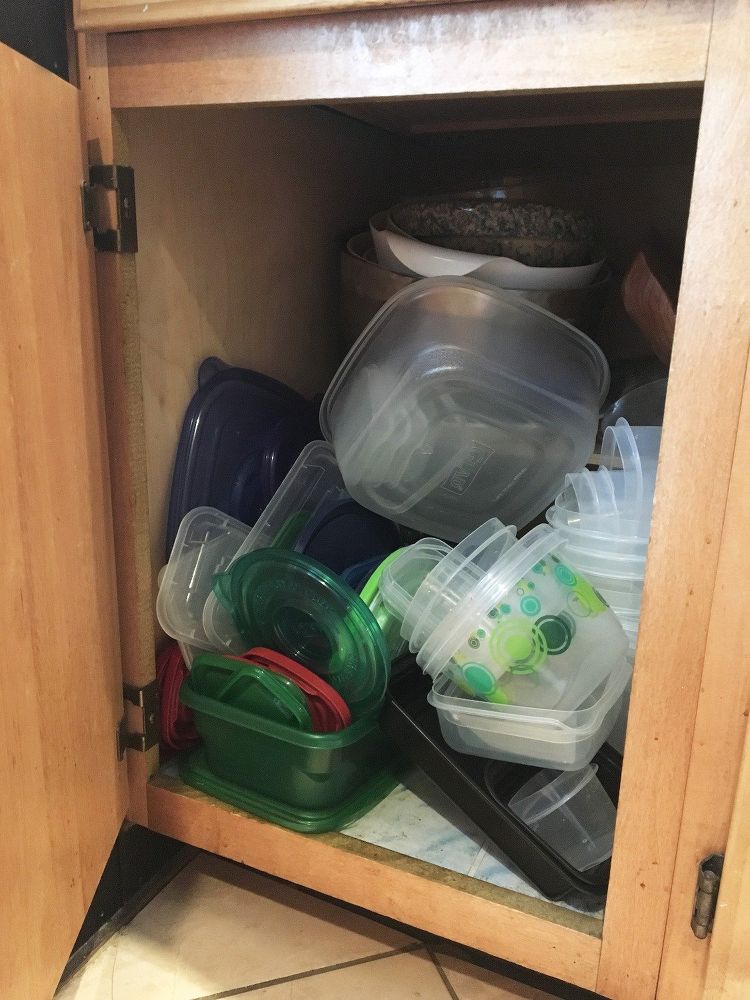
This is why I recommend that you buy new containers to use ONLY for meal prep.
- You are more likely to want to use new containers that aren’t warped or discolored from years of use.
- You don’t waste time comparing containers to find one that isn’t quite as “bad” as the others.
- You save time trying to find a matching lid when all the containers are the same, since they all use the same lid.
Companies have caught on to the trend in meal prepping, so you can buy packs of containers that are compartmentalized like a bento box so you have a section for each part of your meal.
In our house for salad lunches we use Rubbermaid Takealongs bowls, and for chicken cacciatore we use these twist-top containers.
My husband keeps a bottle of salad dressing in the fridge at work. I prefer using these small Rubbermaid containers for dressing. I have never had it spill yet, but that lid can be hard to get on and off, so not a great idea for using it for little items in kids’ lunches.
Freezer/Fridge Space
Before you spend eight hours on a Sunday making meals for the next four months, ask yourself: “where am I going to put all of this?” Do you have room in your fridge for the lunches for that week? While I am a huge advocate of portioning everything out in shiny new containers, doling food out into 10 different bowls takes up quite a bit more space than one large container.
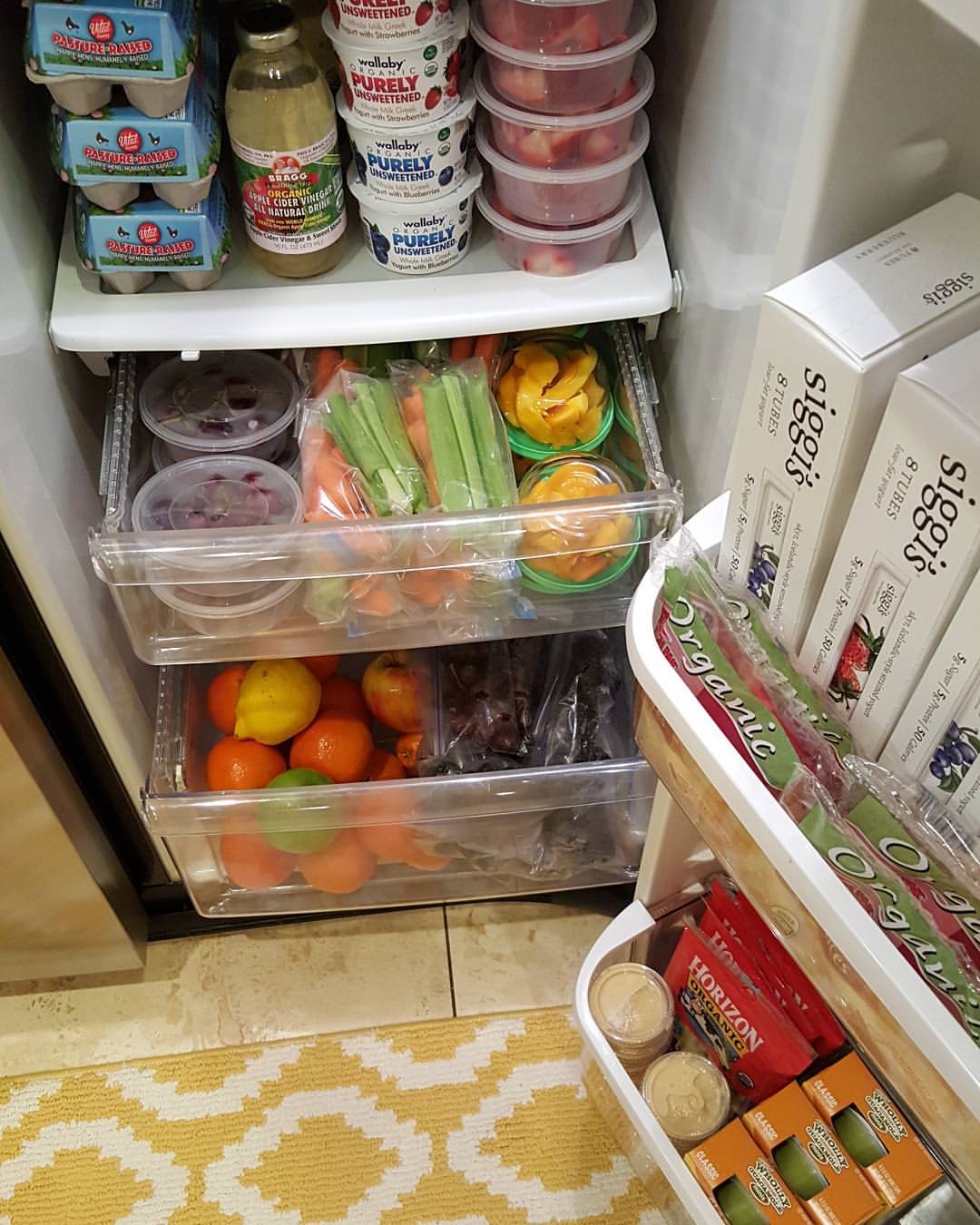
We’ve already seen how buying or making food in bulk to freeze for later is a HUGE time and money savings, but do you have the space in your freezer for it?
We have a side-by-side refrigerator, and it has an in-door water dispenser and ice maker. Those features are awesome, but they severely limit our freezer capacity. So we have to be strategic about what we freeze because there just isn’t that much space.
If you have a larger chest freezer in your basement or garage, you can store a lot more food, and get great savings on meat at a butcher that sells meat in bulk. Our dream is to buy half a cow and have enough meat for six months or so. It’s a very large upfront cost, but long term it results in significant savings.
Labels and Dates are a MUST

One things that is imperative when storing your food, especially in a freezer, is labeling it. Keep a Sharpie and some masking tape handy, and be sure to write down what everything is, and either the date when you put it in the freezer, or an “expiration date” for when it should be thrown out.
When it’s time to plan out your menu for the week, you can easily go into the freezer, see what might be expiring soon, or just what you have on hand and know what it is to add it to the rotation. You can even move it to the fridge right then if it needs some time to thaw before you can cook it or re-heat it.
Optimize your shopping list to save time and money
By this point, you should have a good idea of what kind of meal prep you would like to try, and what sorts of foods will fit well for the method you’ve chosen. Now it’s time to go shopping!
But before you jump in the car and head to the store, there are a few more planning steps you can take to make that trip as efficient as possible.
|
Decide on a menu for the week (5-10 mins)

|
Make a list of what you need (2 mins)
Once you have your menu decided, it’s time to make that grocery list. Go over what you’ve planned on making, and add items you might still need to your list.
To save yourself time at the store, put the list in the order of how things are organized at the store. Most supermarkets have their produce first, then the deli section, then the seafood and meats. Dairy is often all the way at the other end of the store. Putting the list in store order not only saves you time since you’re not backtracking and covering the same ground multiple times, but it also can save you from impulse purchases.
Remember, we have limited willpower. You may have been able to avoid adding those Swiss Cake Rolls to your cart the first time you passed them, but the second time around, you may be far more tempted.
Stick to the list (30-60 mins)
With your grocery store plan of attack in hand, it is time to head to the store and get the shopping done. They key here is to stick to the list.
Make shopping more fun for yourself by listening to your favorite tunes, or a book or podcast while you shop. You can even make it a game by timing yourself to see how fast you can get in and out of the store: your own personal Supermarket Sweep game show.
I have no shame and just sing and dance along to whatever music is playing over the store audio system.

When it comes time to check out, be sure you pick the line with the fewest people, not just the fewest items. It takes a certain amount of time to pay and for the receipt to print out, and that time is roughly the same no matter whether someone bought two things or 50. Scanning items is very very quick though.
So the line with one person with a very full cart may well go faster than the line with 4 people with small shopping baskets. Self-checkout lines are a bit of a different story, since you often have to wait for those in front of you to bag their own items as well as scan them through. You’ll get a feel for what is going to be a quick line in your own store.
Getting Help from Modern Technology
There’s a saying in business that goes “What would Croesus do?” Croesus (rhymes with Jesus) was an ancient king that some say the story of King Midas was based off of.
Croesus was incredibly wealthy. He could have whatever he wanted. When trying to solve a new problem, sometimes it can help to ask “What would Croesus do?” What if money were no object?
Let’s apply that here. How can we save more time on grocery shopping? Well, if money were no object, we’d have maids and butlers that would go out and do the shopping for us. While that might not be feasible for most of us, we can get a significant amount, if not all our shopping done without leaving the house.
Amazon Pantry

One way to make your grocery shopping trips shorter is to have a shorter shopping list.
Have you ever encountered this scenario? You’re out of an item. Say, shampoo, or toilet paper. You have a brand you normally get, so at the store, you go to find it. Only to find that they’re out of your brand.
Now what? You really like the stuff you normally use, but now you have to decide on something new. So you have to look at a bunch of options and compare features and cost and… waste of time.
You can order many non-perishables on Amazon and have them delivered right to your door. And if you set up a subscription for those items (which just automatically re-orders the item for you at a time interval you set) you can even save money on the purchase.
If you’re a Prime member, you don’t even have to worry about shipping costs. Amazon is unlikely to run out of your favorite shampoo, since if you have it on subscription, they know you’re going to want it, and they’ll keep it in stock.
Grocery Pickup and Delivery

My local grocery store has an option for me to order all my groceries online. Someone at the store will go around and act as me, collecting my order, putting it into a cart, bagging it up.
Then, I just go to the store and pick it up. I can even get my order delivered right to me if I need. This lets me automate getting my produce, meats, and other, more perishable items as well as the non-perishable ones.
Grocery List Apps
If you’d prefer to do your shopping yourself so you can inspect what you’re buying, you can still take advantage of technology to help you out. There are numerous list apps out there to keep your shopping list in digital form.
The benefit of a digital list is being able to share it with others, and you can add to it at any time. As soon as you realize you are running low or out of an ingredient or anything else you need around the house, you can immediately take out your phone and add it to the list.
I personally use Evernote, and have a shared note with my husband. Another app recommended by Thorin Klosowski at Lifehacker is Epicurious.
Epicurious lets you store your meal library for easy access. When you are planning to make a meal, just add it to your grocery list, and the app will automatically add all the ingredients necessary to that list. Epicurious will even suggest recipes based on the food you already have on hand. Thorin really hates grocery shopping, and he has more tips on how you can spend less time doing it.
There are also a ton of apps that can help you manage the food you already have in the house. Simply scan in the barcode as you put the food away, and these apps will alert you when they are about to go bad so you can use them up. If you’re carefully planning out your menus though, this shouldn’t be necessary.
Example Week
Here’s just one example of a recent week of how much time I spend prepping food. This is fairly typical of how much time gets spent in the kitchen each week:
- Friday: plan grocery list between binge watching episodes on Netflix (10 min)
- Saturday: do the shopping (60 min), one of us puts away groceries while the other marinates the chicken for our lunches (10 min) Make eggplant pizzas for dinner which are a bit time-consuming because you have to salt them and wait 20 minutes for the water to leach out, but it was a Saturday, and we had the time (60 min)
- Sunday: prep the salads for lunches (20 min) we had our weekly planned cheat day and went out for lunch and to watch football this day. Ended up not even having dinner because we were still full from lunch.
- Monday: made eggplant pizzas again because we were lazy and didn’t go to the gym after work, so we had a bit of extra time in the evening (60 min)
- Tuesday: Made balsamic roast beef in the Instant Pot (10 min of prep, 90 min of cooking while I was at the gym and not having to tend to it at all)
- Wednesday: Baked chicken wings (5 min of prep, 55 min in the oven while we watched another episode of NCIS)
- Thursday: Grilled up some chicken sausage on the Foreman grill. (5 min to pre-heat the grill and put the links on, 15 min of cooking while I played Marvel Puzzle Quest on my phone)
- Friday: Leftover roast beef (5 min to microwave the beef and some broccoli separately), plan the grocery list again.
All told, I spent just over four hours actively shopping and preparing to make 22 meals (lunch and dinner for two people for five days, plus dinner on a sixth day)
Don’t throw your time and money into the trash! (How not to waste food)
So you’ve done your shopping, you’ve come home and you’ve planned out your meals. After all that planning and work, the last thing you want is for that food to go to waste because it doesn’t get cooked or eaten. Here are some steps to take to prevent that from happening.
Don’t try to be too fancy with your meals
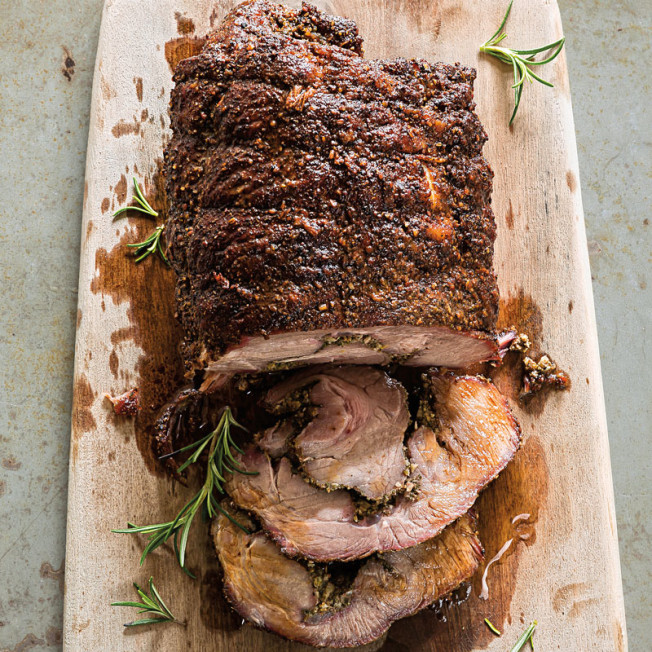
Pinterest has some amazing food photos. And it can be really tempted to want to get fancy and make that herbed, stuffed roast. But do you even own the cooking twine to tie it up with? If you have a day where you know you will have the time to spend the extra attention these dishes need, and you enjoy flexing your culinary prowess, then by all means, have at it, and be sure to invite me over.
But for day to day meals, it’s best to try and keep things simple. When meals start getting complicated, that creates barriers to overcome before you can get those meals on the table. Keep it nice and easy.
Don’t try to force yourself to eat the exact same thing if you know that will drive you crazy
While I did try to make a case for keeping meals boring, that’s simply because it is what’s been proven to work for me, and others in the fitness space. That said, it might not work for you, and if that’s the case, don’t force it.
Try it out, and if eating the same thing every day has you dreading your lunch hour, or tossing your packed lunch and ordering Jimmy John’s, it’s time to try something else. Use the tips within this guide to find ways you can change up your meals to keep things a bit more exciting.
Do NOT forget to LABEL AND DATE STUFF
Human beings are really uncomfortable with the unknown. It scares us, so we avoid it when we can.
If there is a lump in your freezer, and it’s coated in frost and you can’t tell what it is, you are going to ignore it, and eventually throw it away. To prevent this waste, label everything you put in your freezer, and don’t forget to put a date on there too.
You can either put the date you first put it in the freezer, or you can calculate an expiration date and put that on there. Just be consistent with whichever method you use. The expiration date approach makes it easy to know if something should be tossed or not, and it’s similar to the concept of the “sell by”, “best before”, “exp” we already see on food these days.
This also makes it easier to sort the food in your freezer, keeping meals with closer expiration dates on top and up front so you use those up first.
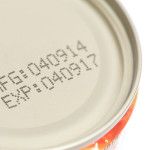
Most freezer bags these days come with an area designed for writing on, and even often have a label for the date. If you are using your own plasticware or glassware, simply put a piece of masking tape on the lid, and write on that. Keep the tape and a Sharpie handy in a kitchen drawer so that labeling your food can happen quickly, without having to go hunt down the items you need.
How to keep yourself from ending up at the drive-thru window when you’ve had a really rough day
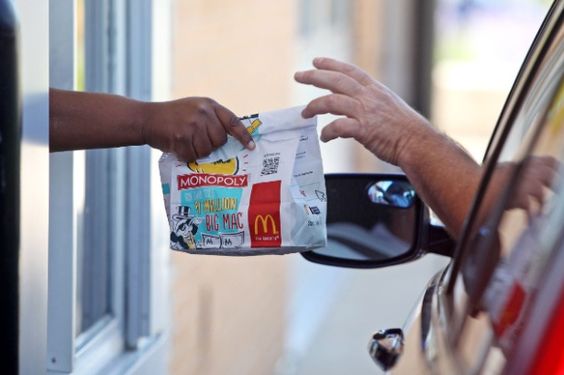
Life isn’t always sunshine and rainbows. We all have rough days.
- Your boss dumps something in your lap last minute and you have to work late.
- Customers screaming at you over things that are completely out of your control.
- The kids need to be driven to and from practice and oh yeah, they need cookies to take to school tomorrow and you’re just finding out about this now.
The last thing you want to do is go home and cook.
Some of the tips above can prevent ordering delivery or a swing through the nearest drive through. If this day happened to be a slow cooker day, then dinner is already done, and that’s one less thing you need to worry about.
But if today happened to be one of those days where you were planning on still doing some cooking, even an easy meal that takes a while can be too much. This is where my backup meal secret weapon comes in handy.
Having a backup meal on hand is like that ace up your sleeve or that secret trick play in sportsball. It’s your secret weapon to combat falling prey to unhealthy meals because of a bad day. And we all have those bad days. There are a few requirements to getting a backup meal to work for you.
|
What’s my backup meal? Aidell’s Chicken Sausage. We usually get the roasted garlic and gruyere flavor(I really do love garlic), however the cajun andouille is tasty as well. These links basically taste like bratwurst with half the fat and calories.
Since they are pre-cooked, you just have to heat them up to eat them. Pre-cooked also means that they will keep a long time in the fridge without spoiling.
We put them on our Foreman grill and 8-10 minutes later, dinner is done. Serve with some ketchup and/or mustard, and maybe a side of steam-in-bag microwaved corn, and you’ve got yourself a meal.
Keeping a backup meal on hand has saved us from ordering chinese at least once a month. Just remember to replace the backup meal once you use it!
Happy Prepping!
Hopefully by this point you’ve gotten yourself a fully fleshed out plan for prepping your meals to save you time, money, and keep you on track with your nutritional goals.
|
Time to get cooking!
Free Recipe Book Offer!
If you’re getting bored with your current dinners and want some quick and easy ideas to flesh out your meal library, I’ve created a FREE Recipe Book companion to this guide.
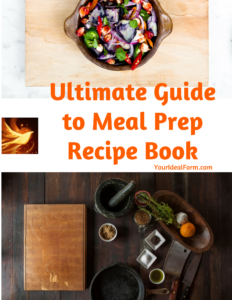
In it, you will find:
- The EXACT recipes I make in my own home that helped me lose weight
- Step by step instructions – most of which take less than 20 minutes of prep!
- Calorie and macro breakdowns of each dish so you know what fits in your diet
Sign up below to get your FREE Recipe Book!
Post contains affiliate links.